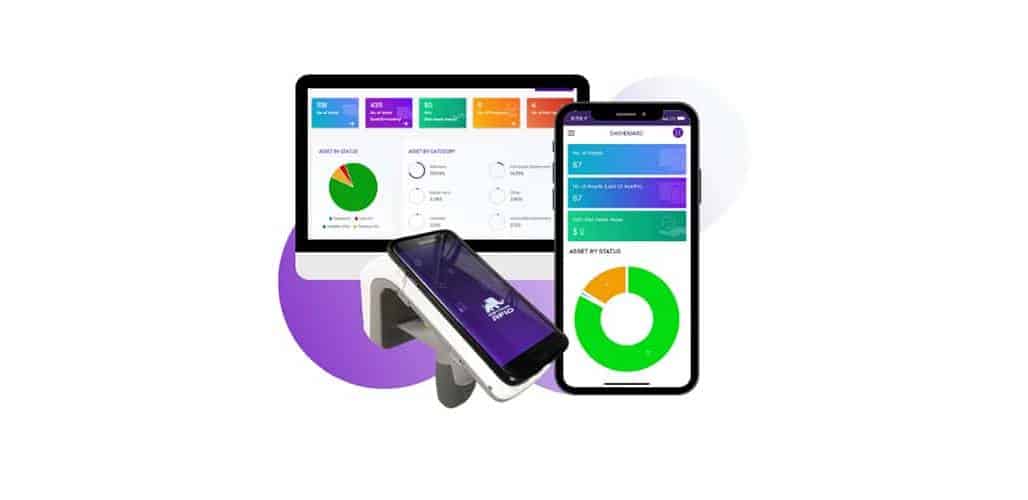RFID Asset Management and Healthcare
In recent years, RFID technology has experienced an increase in popularity. Many big retail companies have started to implement RFID tags in there day to day activities to help keep track of their items. The Healthcare services have also taken a liking to RFID technology and implemented some of the RFID systems, in their day-to-day activities as well.
When the Covid-19 Pandemic hit in 2020, it was estimated that over two million people had tested positive for the virus. With figures so high, many healthcare facilities like hospitals and GPs were overcrowded, causing many items to be lost or misplaced.
Hospital staff and patients can benefit from RFID asset management, which connects millions of healthcare items, so that they can be identified with quickly and accurately. This system helps healthcare staff to find lost or misplaced supplies, ensuring that patients get adequate care. RFID tags can also be read using fixed scanners installed in doorways and at other key points to automatically update the asset’s location.
The Benefits of RFID Asset Management
With RFID asset tracking, you can keep track not only of where an item is located, but also when it was last inspected, and if there are any issues with its condition. RFID tags allow you to instantly see when the item was last inspected, when it is due for another inspection or even if it needs to be replaced. This also streamlines operations by allowing staff members to do their jobs more efficiently, since they always know how much inventory has been removed from circulation.
RFID technology can also track the movement of certain assets. This technology allows the user to see what piece of equipment has moved from its original location.
People can also be tracked with RFID bracelets. This can be beneficial in the healthcare sector, as it enables doctors to keep track of patients moving between departments.
- RFID asset management is a solid investment for any business that has a lot of valuable assets to track.
- Gain real-time visibility of your assets.
- Track the movements of your items.
- Saves time over manual inventory.
- Improves maintenance and safety.
- Locate items with Zebra Motionworks RTLS (probably need a different blog post on this – this is a different and much more expensive product)
- Improved compliance
Active vs. Passive RFID for Healthcare Asset Tracking
There is more than one type of RFID tracking, which are used for different purposes. The two main types of RFID technology are passive and active.
Passive RFID – With passive RFID, the tags do not contain a battery, making them very affordable for a wide variety of assets, with some tags costing as little as 10p. Handheld or fixed RFID readers can read more than 1,000 of these tags per second at a range of up to around 10 metres. This solution is very cost-effective and can be used to quickly track large amounts of healthcare equipment as well as consumables. Passive RFID tags do not enable real-time location but can be updated if they pass through a fixed reader gateway or are scanned with a handheld reader.
Active RFID – Active RFID tags are more expensive but offer some key advantages over passive tags. Active tags contain a battery and can be read at a range greater than 100 metres. This enables active tags to be located in real time to an accuracy of one metre or less in some cases. For more expensive mobile assets such as beds and wheelchairs, active tags can greatly improve efficiency when an item is needed urgently and can reduce lost assets.
What Can you Track with RFID Asset Management in Healthcare?
The future of healthcare is now in your hands. RFID tags are a wonderful example of innovative technology that serves to improve many businesses.
Medicine and pharmaceuticals – With the help of Radio-Frequency ID Technology or RFID, hospitals can keep tabs on their pharmaceuticals. It provides an easy and efficient way for them to monitor these medicines as they move from location to location within the hospital system.
Medicine and pharmaceuticals are the most crucial assets that a hospital has. They are an expensive and controlled commodity. Because of this, these items are at risk of being misused or stolen and must therefore be protected.
Hospitals and healthcare services must keep constant count and be in control of these assets. RFID technology can be implemented to help keep track of each drug the hospital owns. RFID asset management also helps staff members to stay up to date with expiration dates and other relevant information. Overall, RFID asset management systems help to manage medicine and pharmaceutical inventory at a much easier and controlled rate.
Medical equipment – Healthcare providers can track a wide range of equipment, ranging from large assets such as beds and wheelchairs to smaller tools such as blood pressure monitors, stethoscopes and thermometers. Tracking medical equipment with RFID can enable staff to have the equipment they need in the right location, cutting out valuable time spent looking for equipment. It can also reduce the amount of money spent on new equipment, when that equipment is already there, but not accessible when staff need it.
Patients and medical records – RFID asset management allows RFID tags to be embedded in patient wristbands, to keep track of the patient and ensure quality care.
RFID Asset Management Solution for Healthcare
RFID Asset Management can help Healthcare providers quickly and easily locate their assets, to assist them in providing life-saving care. At TEC-RFID, we aim to make implementing RFID as simple as possible, so our customers can quickly realize the benefits it provides. Our RFID Asset Management software provides a complete solution to get started with managing healthcare assets using RFID. Head over to our main RFID in Healthcare page, to learn more.

